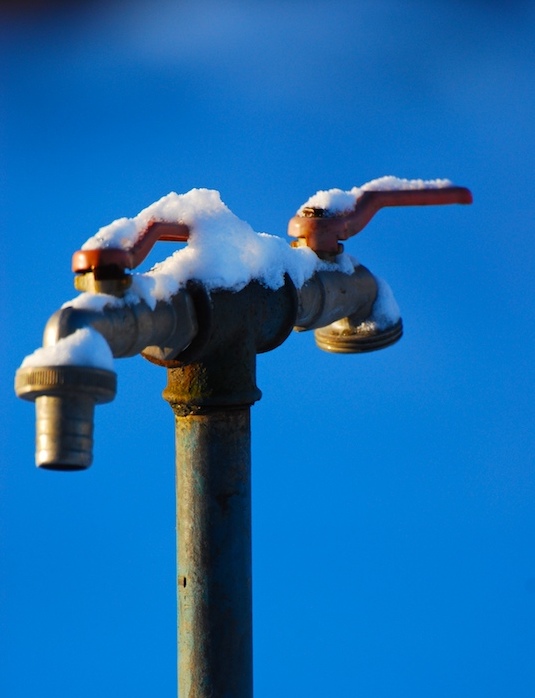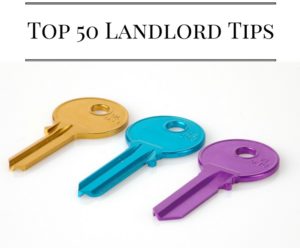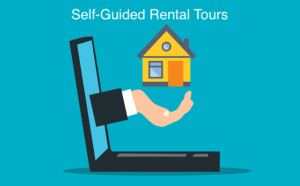Winter is probably the last thing on your mind right now. Summer has only just ended. You’re certainly not worried about frozen pipes in your rentals yet.
You might even be looking forward to collecting a full rent roll again now that all of your units are rented again (I hope you collect rent online).
Sorry but a DIY landlord’s work is never done!
Now is the time to start winterizing your homes. Hurricane season is here and bitter cold isn’t far behind.
Preventing frozen pipes is easy if you follow these tips. Don’t let frozen pipes and other weather disasters ruin your rental business.
In this article, I will:
- Give you 35 tips to winterizing your rental homes both inside and out
- Show you how to prevent frozen pipes
- List the proper steps to thawing frozen pipes
- Tell you the one thing that will make your property always habitable
Note that this article contains Amazon Affiliate links to products I think you will find helpful. This means I may earn a commission, at no extra cost to you, if you purchase anything through a link and it helps me continue to bring you useful articles like this one. Thanks for your support!
Indoor Winterization
How To Prevent Frozen Pipes
1 – Mind The Gap
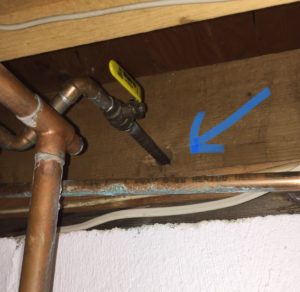
Every rental home has holes and gaps where water supply lines can be exposed to extreme temperatures. Start in the basement where your water pipes are located. Look around and seal up any nearby gaps between the foundation and frame where cold air could freeze those pipes.
Also look in utility closets and under sinks for any pipes that might be exposed to outside air through small gaps.

Do yourself a favor and invest in a few cans of Great Stuff. This is the easiest and best way to seal all of those gaps!
2 – Don’t Let The Heat Drop
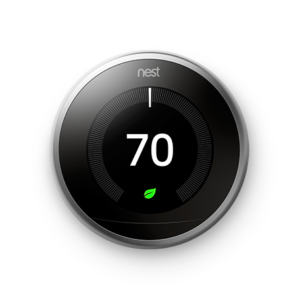
Tenants are often away for extended periods during the holidays and the wintertime when the temperature can turn dangerously low. Your tenant may be tempted to save a few bucks by lowering the heat (or worse, shutting it off!) while they are away.
I include a lease clause that tells my tenants that they must maintain a minimum heat setting of 58 degrees at all times. Even while they are away.
This helps avoid frozen pipes.
3 – Wrap It Up
Another simple preventive measure you can take to prevent help prevent frozen pipes is to wrap any exposed pipes in insulating foam pipe covers. You don’t need to wrap them all. Just the ones that are located on outside walls. These pipes are most at risk.
4 – Heat It Up
In extreme cases, you may want to consider investing in heat cable for pipes. I don’t recommend this as your go-to solution for rentals simply because heat cables requires monitoring or they can be risky. Not all tenants will take the necessary care.
If you feel it may be necessary for your rentals, be sure to invest in the auto-shut off versions like the one above. This will eliminate wasted energy and help ensure that user-error doesn’t cause a fire!
Here’s one landlord who swears by this product:
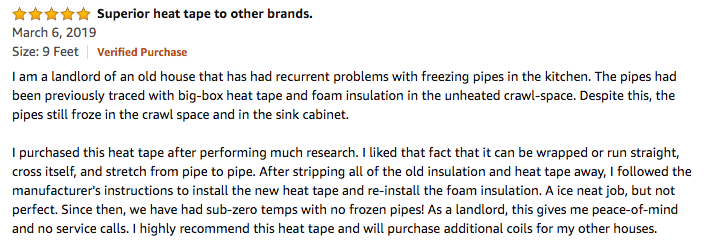
5 – Have An Open Door Policy
A simple yet effective way to ensure at-risk pipes remain above freezing temperatures is to keep closet and cabinet doors open. It may seem unsightly, but as a temporary measure during extreme low temperatures, it can make the difference between happy tenants and a disaster.
Open up cabinet doors under sinks, to any unheated areas of the house, utility closets, etc. You can even set up fans to help the hotter air circulate around the water lines.
6 – Let It Flow
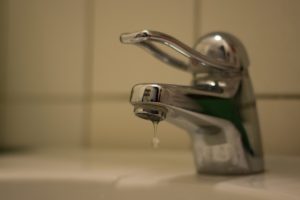
Pipes don’t burst because they are frozen. They burst because the pressure behind the frozen blockage is too much. If you have an area of your rentals where you fear pipes might be susceptible to freezing, then you can instruct your tenant to leave the down stream faucet open with a little drip. This will ensure the water keeps flowing and doesn’t have a chance to freeze.
This is a great last resort if you lose power and are unable to heat the house. Open the faucets to a small drip to help prevent a frozen pipe disaster.
7 – Have An Early Warning System
Leak detectors won’t prevent a frozen pipe but it could keep a small leak from becoming a huge disaster.
I recently installed a Ring Alarm and added the Ring Flood and Freeze Sensor just for this reason.
However, you don’t need a whole house alarm system to get this protection. The Govee WiFi Water Alarm is a popular water leak detector which requires no other alarm system.
How To Thaw Frozen Pipes
If your water pressure drops to a trickle then you may very well have a frozen blockage. If you have a pipe that has burst, shut off the main valve and call a professional plumber.
If you suspect the pipe is blocked but not damaged, then you can restore water flow. Follow the steps the experts recommend when thawing frozen pipes.
1 – Shut off the main water supply
2 – Turn on the faucet supplied by the frozen/blocked pipe
3 – Heat the frozen section of pipe with a hair dryer or heat cables. Do not use an open flame to warm the pipe.
4 – Turn the main water supply back on and check to see if full pressure has been restored
5 – Check the other faucets and toilets in the unit to make sure there are no other blockages
Preventive Maintenance For Mechanical Systems
Test Your Furnace
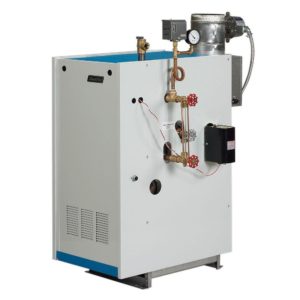
Give your furnace a test run before the first cold snap. This will save you the late night call and emergency technician fee!
Change Air Filters
Now is a great time to replace your furnace filters in your rentals. This simple step helps ensure your HVAC runs as efficiently as possible. It also saves you or your tenant money!
Let It Bleed
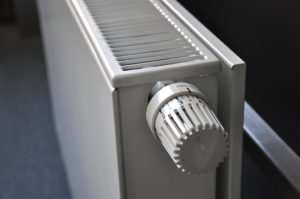
Be sure to bleed your steam valves if you have radiant heat. Simply loosen the valve slightly until water appears and then close it again. This releases trapped air to get the hot water flowing again. Family Handyman shows you how if you are unsure.
Have Your Heater Serviced
It’s a good idea to have your heater serviced in the Fall before temperatures drop and technicians get too busy. According to Home Advisor, a furnace repair will cost you between $130 to $450.
An inspection by a qualified technician will be around $80 – $100. A furnace inspection service call should include a thorough check of all the working parts to ensure it is working properly and address any small issues before they become big, expensive ones.
Test Your Sump Pump
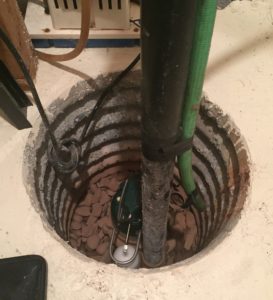
Fall and Winter weather brings a lot of moisture which can end up in your basement if your sump pump is broken. Don’t find out the hard way. It’s easy to test.
Simply pour a bucket of water into the sump well until it fills up enough to trigger the float. If it fills up but doesn’t drain then it’s time to replace your sump pump.
PRO TIP – Invest in a sump pump with a back up battery system. They will keep the sump pump running for several hours after the power goes out. This can make difference between a flooded basement and a happy tenant! I had one like this recently installed in a single family rental.
Sweep The Chimney
If your rentals have working fireplaces then you should assume your tenants will be using them. It’s best to have them inspected and cleaned before the fall season. Check to make sure the damper is opening and closing properly. Have it professionally cleaned if it’s been a while since the last cleaning.
Test Smoke Detectors
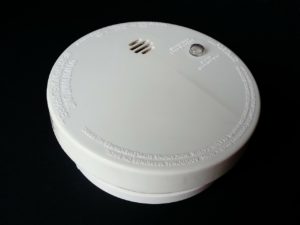
Now is also a good time to test smoke and CO detectors to make sure they are working. Be sure to change the batteries while you are up there.
Don’t Forget Your Water Heater
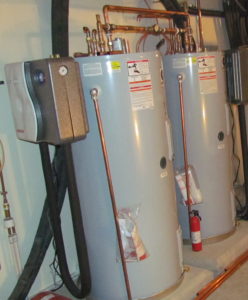
Your water heater will also be working harder this winter. This is especially true if you have an on-demand or tankless system like I do. It takes more energy to heat up colder ground water. If you have a tank heater, consider draining it to remove sediments that could be impacting performance.
To save money and help ensure the hot water never stops flowing, consider wrapping your water heater with a water heater insulating wrap. It will reduce heat loss by 40%.
Insulating Your Rental
Keep your tenants warm and happy this winter by insulating your rentals against the harsh weather.
Windows
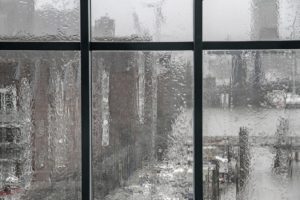
Unless you own new construction, your rental’s windows are probably drafty in the winter. This can cause a lot of heat loss and even leak inside the rental.
There are a few steps you can take to make your rental a little cozier.
- Install storm windows if you have them
- Seal any gaps around the windows with caulk
- Apply weather stripping for a simple fix
- Use spray foam insulation under the trim if possible
- Install shrink film window insulation
PRO TIP – If your rental is in a very cold climate, offer to apply window seals like an insulating shrink film. It’s inexpensive, will save on energy bills, and will give you a chance to inspect the unit as well.
Doors
Seal up any gaps around doors as well.
- Install the storm door/window if you have one
- Apply weather stripping around the edges
- Use Spray Foam to insulate under the trim
- Replace worn out door bottom seals
Outlets
Outlets and switches on exterior walls can let in cool air. You can insulate them easily with these foam outlet insulation gaskets. They are easy to install.

- Remove the wall plate cover
- Pop out the pre-cut inserts to match your outlet/switch style
- Set the foam gasket over the outlet or switch
- Replace the wall plate cover
It will take less than 60 seconds per outlet.
Replace Or Add Insulation
You may want to inspect the insulation in the basement, crawlspaces, and attic to see if it needs replacing or filling in. Older homes often have inadequate insulation by today’s standards.
If your rentals are in the norther half of the country and have an insulation R value of 38 or lower then you may benefit from adding some more insulation.
Check out this Energy Star guide map with recommended home insulation values across the country.
Re-insulating the house may be too big of a project but you can still improve your rental’s energy efficiency by filling in any poorly insulated areas.
- Look for drafts along exterior-facing ceiling walls by holding a lighter flame nearby. Be careful not to burn the wall or you will be painting again!
- Go into the attic and stuff more insulation in those drafty corners where the roof meets the walls.
- Check the insulation around any recessed lights. You can add insulation around them if they are IC (Insulation Contact) rated lights.
- Add insulation around the attic access door
- Look for gaps around pipes
- Add insulation where the foundation meets the walls
Reverse The Ceiling Fans

If your rentals have ceiling fans, instruct your tenants to reverse the direction in the cold season. This will push the warmer air back down keeping them warmer. It can help them reduce their energy bills by allowing them to lower the thermostat a degree or two.
PRO TIP – Ceiling fans should blow clockwise in the Winter and counter-clockwise in the Summer.
Outdoor Winterization Steps
Landlords and homeowners need to prepare the outside of the house as well. Here are a few of the steps you can take to help prepare your rental for the harsh winter ahead.
How To Prevent Frozen Pipes Outdoors
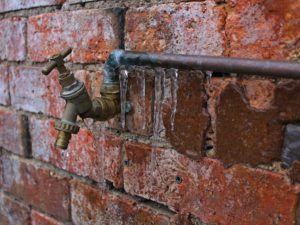
Shut Off Water Lines
Locate and shut off the water supply lines to your external spigots. Open the faucet to relieve any pressure in the line.
Also remove and store any outdoor hoses. This will help ensure the water drains and protects your hose from the elements.
Flush The Sprinkler System
This is a crucial step if your properties have automatic sprinkler systems. Hire a professional to shut down the system at the end of the season. They will blow air through the water lines to ensure they do not freeze and break when the ground freezes.
Cover Outside Faucets
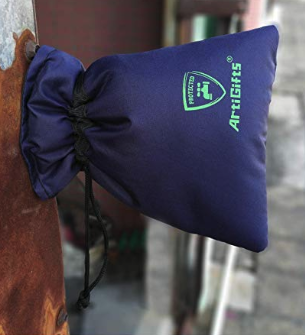
For extra protection you might want to install insulated faucet covers to help protect the pipes.
Trim Dead Branches

Winds can reach dangerous speeds in the late fall and winter. Avoid property damage by trimming any dead branches and branches hanging close to the home.
Also be sure to clear them above walkways and driveways. Dead branches can do a lot of damage to cars and people when they fall!
Close The Pool
It may be sad to have to close the pool for the winter but it can’t be avoided. Hire a professional to get your pools ready for winter. They will keep it from freezing damage as well as make it clean and ready for Summer.
Fertilize The Lawn
Summers are tough on grass. Late Fall is the most important time to fertilize your lawn. Use a winter fertilizer formula designed to stimulate root growth. It will help ensure a green lawn in the springtime.
Protect Shrubs And Bushes

Most outdoor landscaping should be able to withstand the winter weather but some may require special attention.
If your rental property has any newly planted shrubs or could be subject to freezing rain then you will want to protect them them in burlap. This will keep the branches protected from the cold and weight of heavy snow so they don’t snap.
Clean The Gutters

Clear the gutters of any leaves and debris to ensure the water continues to flow away from your property. Clogged gutters are a main reason that basements flow during heavy rains. Winter snow will also do this as it melts.
Inspect The Roof

If you can, get up on the roofs of your properties and inspect them before the cold weather hits. Look for loose shingles and gaps that need to be closed to prevent a leak.
Look for gaps in the seams and by the chimney. Also, inspect the chimney for any loose bricks that need to be tuck pointed.
Note any soft spots in the roof as you walk around. These areas need to shored up before heavy snow causes them to collapse. Have a professional handle this one.
Prevent Ice Dams

Ice dams are ridges of frozen water falling off a sloping roof. They are bad because they prevent melted water from draining and they can injure your tenants. It can also cause your ceiling to leak inside.
Use a roof rake to remove the snow pack to let the ice melt.
You can also prevent them with a heated cable. Attach it to your roof where ice dams typically form.
Caulk Gaps In Siding
Do a walk around the property and looks for gaps in the siding that need to be caulked. These typically occur where pipes and wires enter the house.
Have Supplies Ready
Whether you or your tenant are responsible for clearing snow, be sure to have a supply of materials ready at every property. Don’t leave it up to your tenants to buy the supplies because many will wait until after the first storm hits. Better to be prepared and avoid fines.
I like to keep the following:
- Snow Shovels
- Bucket of pet-safe driveway salt
- Salt spreader
- Ice scraper to break up thick ice on sidewalks
I usually stop by in the fall and make sure each rental has these items in the garage or storage shed.
Cover Air Conditioners
If you leave window air conditioners in place all year then be sure to cover them during the winter. Window air conditioner covers will help keep the draft inside to a minimum and protect them from the elements.
Central air conditioners don’t need to be covered in the winter. However, if you get a lot of leaves in the Fall then it is a good idea to cover it with plywood and cinder block until the leaves have fallen.
Put Away Loose Yard Items
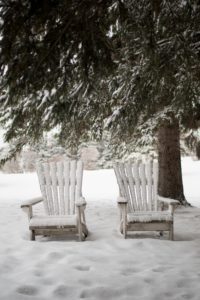
Remind your tenants that now is the time to store or secure any loose items in the yard like barbecues, chairs, and umbrellas. A flying umbrella can do a lot of damage!
This One Thing Will Make Your Rental Habitable All Year Long
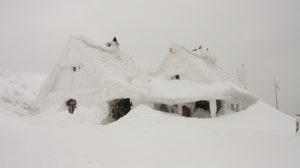
If you really want to make sure your rental is habitable all year long then I strongly recommend you invest in a back up generator system.
I live in the Northeast where hurricanes have left many without power for weeks (not just days!). This is a nightmare scenario for both tenants and landlords.
A back up generator system can save you both from the hassle and expense of an extended power outage.
Portable Generator
The simplest way to ensure your tenants always have power to meet their basic needs is to have a portable generator available on the property. I keep one like this at my rentals and it has been a life saver! My tenants had power during the last hurricane and I didn’t!
Mine runs directly into the power box so my tenants don’t have to deal with extension cords running all over the house.
This required a bit of professional electrical work to install the electric panel transfer switch and outdoor plug in receptacle. This cost about $1,000 for materials and labor but it was well worth it!
This makes it very easy for my tenants if the power goes out. They turn on the generator, plug it in, and switch the electrical box to the back up generator. This will power the basics like HVAC, Sump Pump and Refrigerator until the power is restored.
No upset tenants! No compensating them for inhabitability!
PRO TIP – Have instructions on how to run the portable generator handy. I post them in the basement next to the electrical box. This way they know exactly what to do if the power goes out.
Whole House Standby Generator
A whole house generator is even better. It will automatically kick on when the power goes out. There is nothing for your tenants to do. It will pay for itself after a couple of extended power outages by keeping your tenants paying rent.
These are pricey but you might be able to save a little by purchasing the generator yourself and having a professional install it. A typical install will run between $1,300 and $6,900 and average around $4,000. Check out Home Advisors True Cost estimator tool to see prices in your area.
I haven’t looked into these myself yet but Generac appears to be the market leader so they must be doing something right.
Whichever back up generator system you choose, advertise it! Put this in your listing to make your rental stand out. Anyone who has ever experienced an extended power outage will appreciate and value this!
Conclusion
Summer is over and you may be tempted to sit back and watch the rent roll in. However, Fall is the best time to winterize your rentals. Avoid frozen pipes by following the expert tips above.
Follow the other 34 home winterization tips to keep your properties ready for the long cold season. It will keep your systems running smoothly and keep your tenants happy all winter long.
Consider investing in a back up generator to ensure your rental is always habitable – even during an extended power outage.
Want More Landlord Tips?
Sign up today for the Accidental Rental monthly newsletter for access to more landlord tips and bonus offers!

